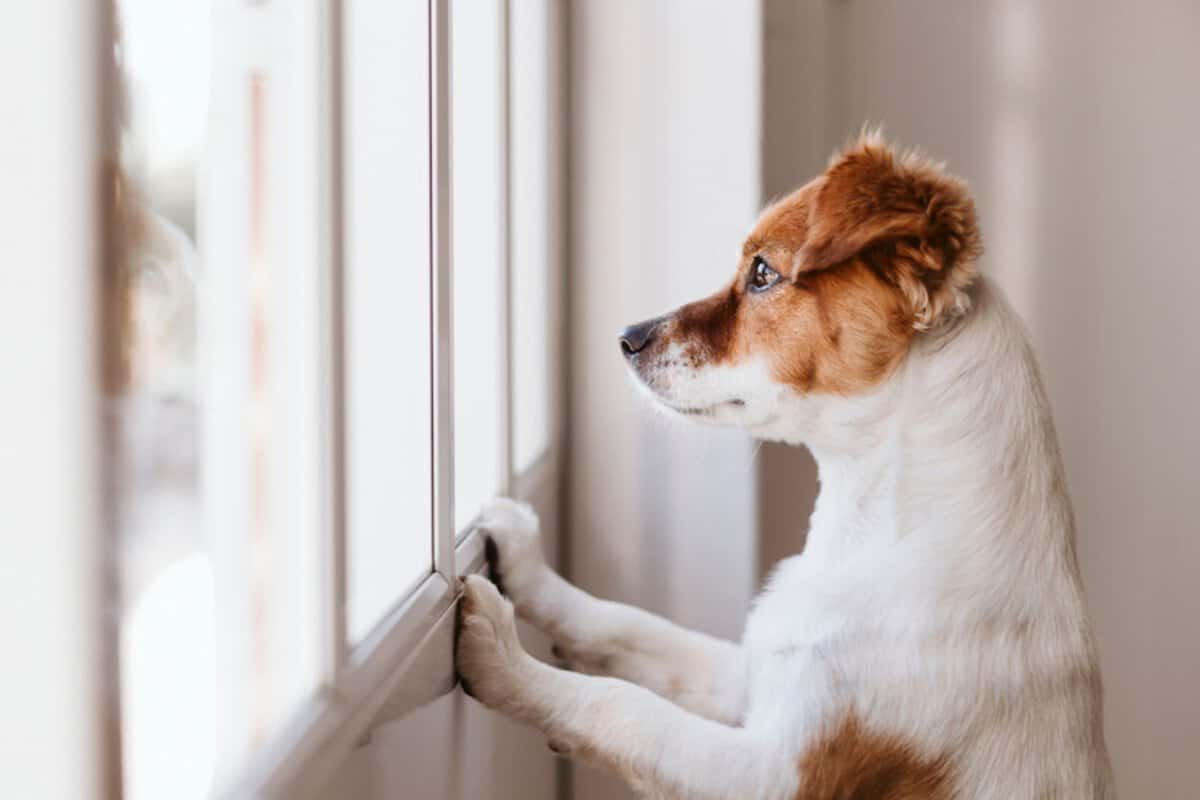Picture this: you've just unpacked the last box in your new home. You sigh with relief, but then you see your four-legged friend sitting anxiously in the corner. Moving is already quite a job, but with a dog? That can get quite complicated.
We at Moving.nl understand that your dog is an important part of your family. That's why we've put together this guide to help you and your furry friend navigate the moving process. We focus primarily on addressing separation anxiety, because let's face it: no one wants to come home to a new house that has been transformed into a playground for a stressed-out pup.
Why moving with a dog can be a challenge
You know the saying “old dogs don't learn new tricks”? Well, that also applies to moving. Dogs are true creatures of habit. They love their daily walk, their favorite spot on the couch and the familiar smells of their territory. A move throws all this out of whack.
Emma van der Berg, a well-known dog behavior expert, explains it this way: “Imagine suddenly waking up in a strange house, without anyone telling you what is going on. This is what moving feels like for your dog.”
Some dogs adapt like a fish to water, while others behave as if you took them to an alien planet. It can lead to all kinds of behavioral problems, of which separation anxiety is one of the most common.
Preparation: The key to a smooth move with your dog
Get your dog used to it in advance
Think of your dog as a toddler going to school for the first time. A little preparation can do wonders. Here are some tips:
- Take your dog with you on an exploration of your new home. Let him sniff and absorb the new scents.
- Bring some familiar items to the new house. His favorite cuddly toy or blanket, for example. This way the new house already smells a bit like home.
- Keep your daily routine intact as much as possible. If you always go for a walk at 7am, keep doing it.
During moving: Minimize stress for your dog
Moving day itself can be a madhouse. For you, but certainly also for your four-legged friend. Here are some options to make it bearable for your dog:
- Let your dog stay with that one friend who always has dog treats in his pocket.
- Create a zen corner in the old or new house where your dog can retreat from all the hustle and bustle.
- Turn on the radio to a quiet station. Classical music works surprisingly well for dogs!
NB: Leaving your dog in the car while moving is an absolute no-go. Unless you plan to turn your car into a sauna.
After the move: Getting used to the new environment
The first days in the new house
Imagine your dog is a tourist in a strange city. He needs a guide. That guide is you.
- Give your dog a tour on a leash. This way you prevent him from storming through the house over-enthusiastically and accidentally knocking over that expensive vase.
- Place his basket in a central location. This will be his 'home base' in the new adventure.
- Try to maintain your normal routine for the first few days. If you normally play a game of fetch in the garden after dinner, do so in your new garden.
Building up from staying alone in the new environment
Rome wasn't built in a day and your dog won't get used to being alone in the new house in one day. Here's how you build it:
- Start small. Leave your dog alone while you get the mail from the mailbox.
- Build it up slowly. From the mailbox to the supermarket, and so on.
- Watch for signs of stress. If your dog is acting like a confused detective in a film noir, it's time to take a step back.
Recognizing and tackling separation anxiety after a move
Separation anxiety in dogs is like a bad Tinder date: unwanted and sometimes difficult to get rid of. Here are the signs:
- Your neighbors text you that your dog is considering a career as an opera singer
- You come home and your dog has decided to become an interior designer (read: everything is broken)
- You find 'presents' in places where they don't belong
- Your dog greets you as if you just returned from a trip to Mars
Strategies to reduce separation anxiety
- Gradual desensitization: Get your dog used to your absence the way you get a toddler used to vegetables: little by little.
- Counterconditioning: Make your departure a party. Give your dog a special treat when you leave.
- Creating peace: Think of calming smells or sounds. A lavender spray or a playlist of 'Relaxing Sounds for Dogs' can do wonders.
- Mental stimulation: Leave puzzle toys behind. This way, your dog is too busy to worry about where you are.
| Strategy | Advantages | Points of attention |
|---|---|---|
| Gradual desensitization | Works in the long term | Takes time and patience |
| Counterconditioning | Changes how your dog feels | Being consistent is key |
| Sedatives | Fast relief | Only after consultation with the vet |
| Mental stimulation | Prevents boredom | Rotate toys regularly |
Technology as a tool
We live in 2024, folks! Why wouldn't we take advantage of that?
- Dog cameras: Imagine your dog having his own reality show. You are the only viewer.
- Smart food dispensers: Provide a snack from a distance. It's like Uber Eats, but for your dog.
- Interactive toys: Keep your dog mentally fit, even when you are busy with your new job.
The importance of physical and mental stimulation
A tired dog is a happy dog. Make sure your dog has plenty to do:
- Go for a brisk walk before you leave. Think of it as a workout for both of you.
- Leave puzzle toys behind. It's like Netflix, but for dogs.
- Consider a dog walking service. It's like a personal trainer, but for your four-legged friend.
Legal and practical considerations
Do not forget to report the new address to the database where your dog is registered. You don't want your dog to accidentally receive a letter at his old address.
Also explore the options for dog daycare or walking services in your new neighborhood. It's always useful to have a backup plan in case you get home unexpectedly late.
Finally: patience
Moving with your dog is like learning to dance: it takes time, you sometimes step on each other's toes, but eventually you find the right moves together. Patience is key. Some dogs adapt like a chameleon, others need a little more time.
Remember: you know your dog best. Trust your instincts and don't hesitate to ask for help if necessary. Before you know it, you will both feel completely at home in your new home.
Frequently Asked Questions
How long does it take on average for a dog to get used to being alone after a move?
That is just as predictable as the Dutch weather. It can vary from a few weeks to several months. Patience is your best friend here.
What if my dog keeps barking or howling when I'm gone?
If your dog sounds like a broken CD that's stuck, it could indicate separation anxiety. Start with short periods of absence and build up slowly. If the problem persists, it's time to call in the big guns: a professional dog behaviorist.
Is it better to get a second dog so they have company?
Two dogs = double the fun, right? Unfortunately, it's not that simple. A second dog is no guarantee of success and can even worsen the situation. Focus first on helping your current four-legged friend adapt.
Are you moving with your dog soon? With these tips and insights, you are well prepared to make the transition as smooth as possible. Both for you and your furry roommate.
Request 3 free moving quotes from Moving.nl
Do you want to be sure that your move will be a success? Request 3 free quotes now via Moving.nl. This way you can focus on what's really important: creating a nice new home for you and your four-legged friend.

